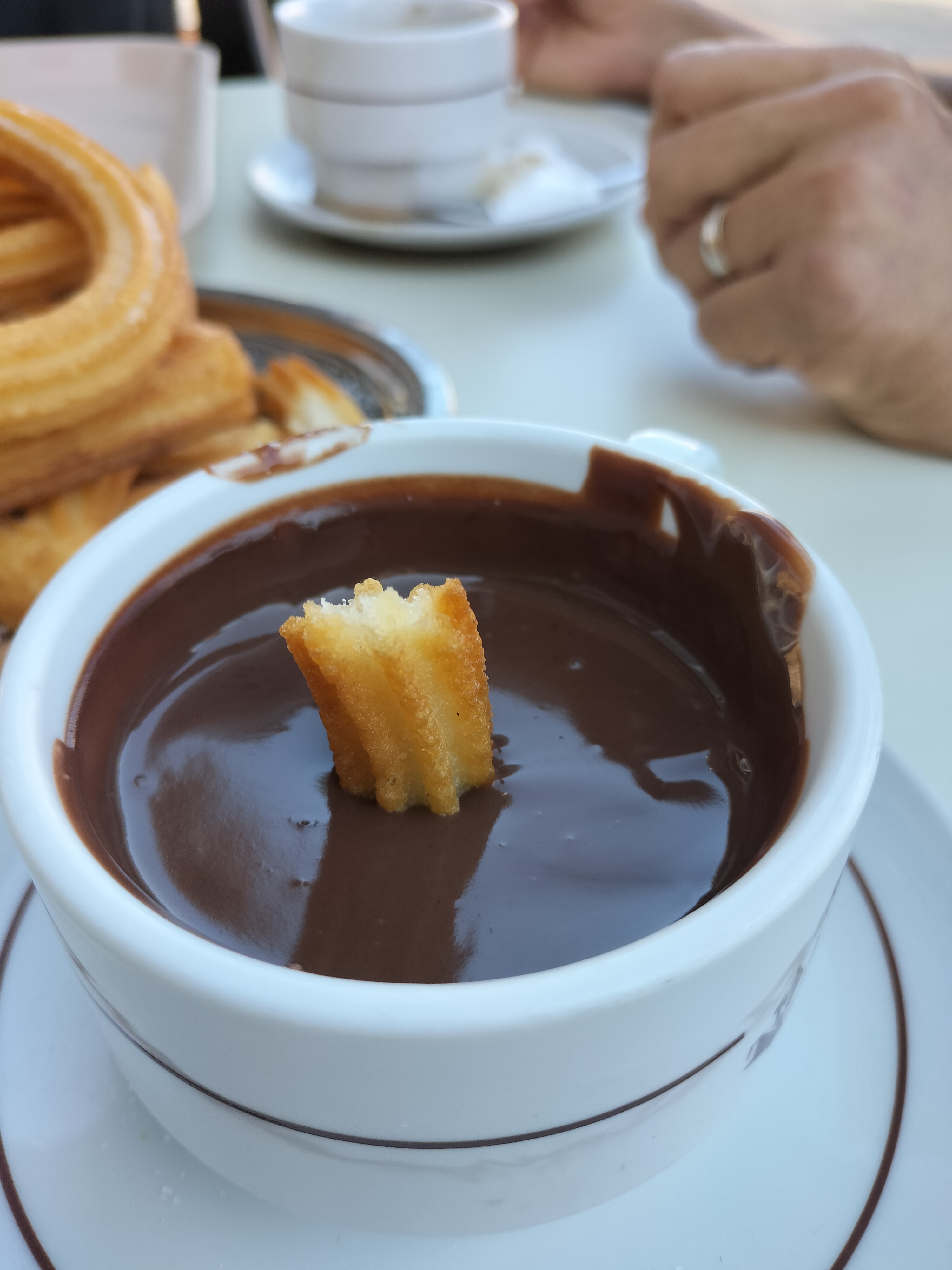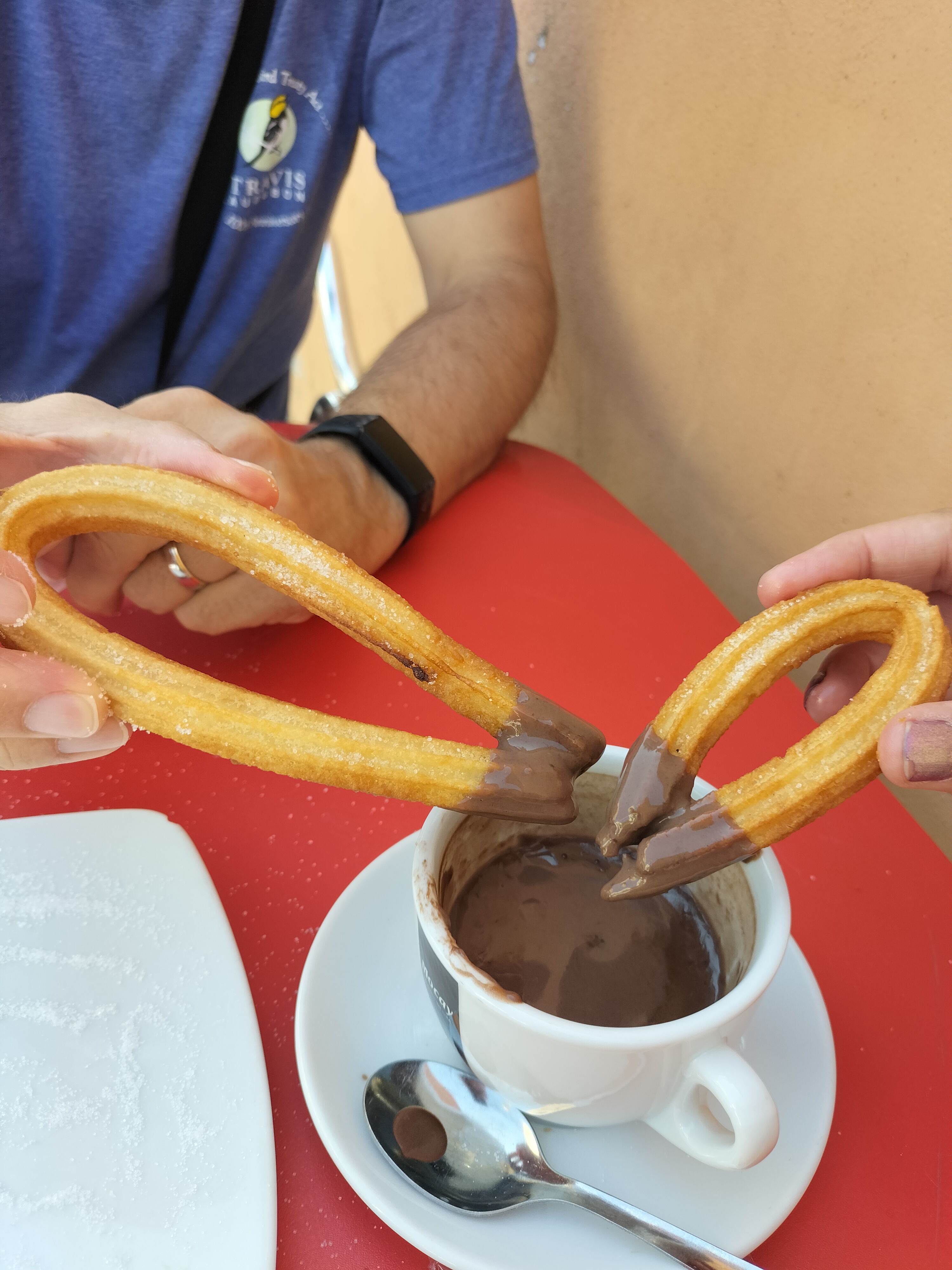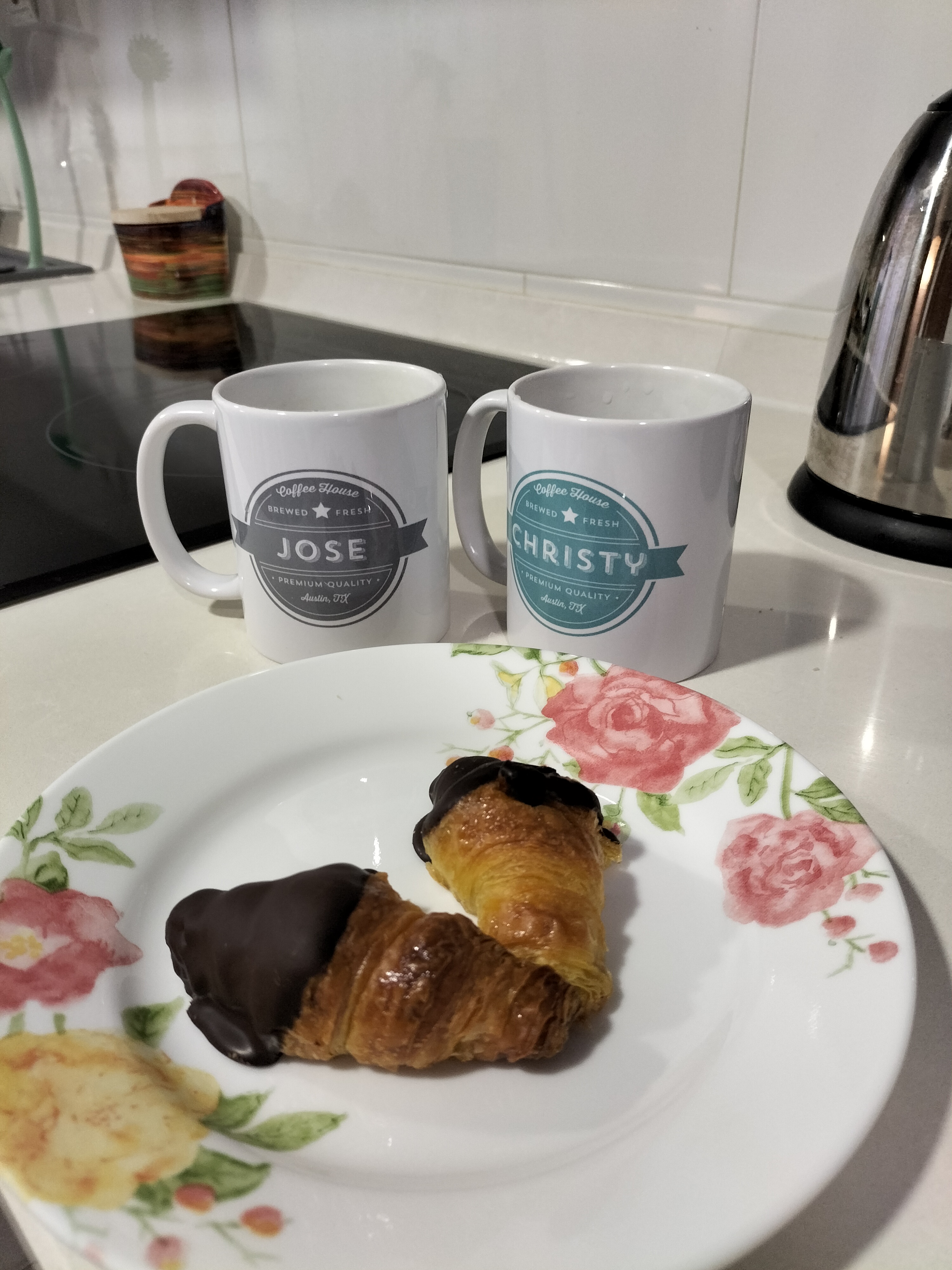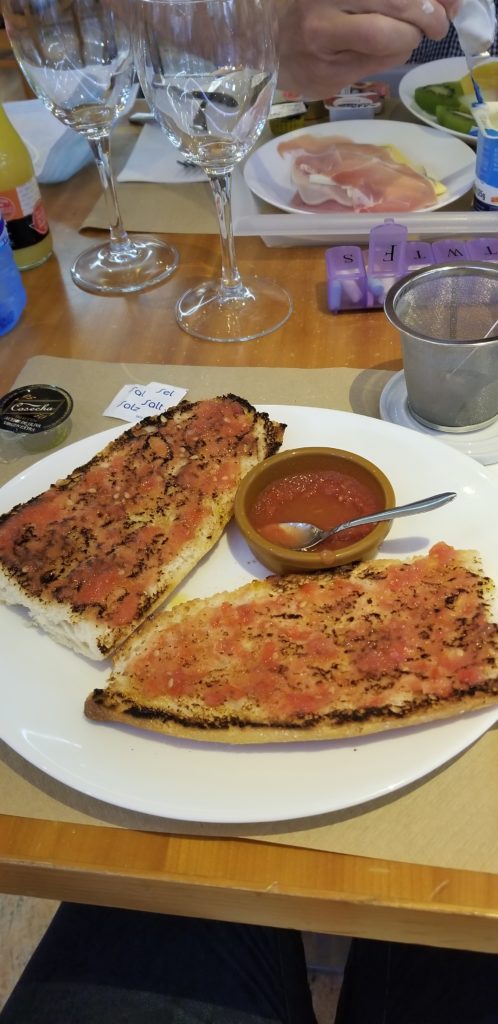This week marks five weeks of “camping” in our home while our furniture and stuff remains firmly lodged in a warehouse in Houston. So, I thought I’d talk about one of the main reasons we moved to Spain, and that is FOOD. To misquote Shakespeare, “How do I love Spanish food, let me count the ways!”
If you think of types of foods as different colors, say, if Italian food were yellow and Chinese was green and Mexican was blue and Indian was purple, Spanish food would be its own color, say red. In this classification scheme, countries with similar foods would have different shades of the same color, so food from different Latin American countries would be different shades of blue, and Portuguese food, which is very similar to Spanish food, would maybe be pink or some derivative of red. My point is, Spanish food is nothing like Latin American food, a fact I did not know when I first moved to Spain 35 years ago.
So, let’s start with breakfasts, and I’m going to speak in general terms, since of course, in any situation there were will always be exceptions to the rule. But in general, breakfast is a small meal (other than for children.) And breakfast cereal is not a regular part of Spanish breakfasts, though you can find cereals at grocery stores, just not in the quantities we’re used to seeing in the US. Most adults barely have much of a breakfast at all, and it’s more often a savory one than a sweet one.
The exception is my all-time most favorite breakfast food: chocolate con churros. (Pronounced chōh-cōh-lah-teh cōn chū-rrōs.)

We’ll start with the churros, which are made from a dough that does not contain sugar and is pressed out of a machine into little grooved rods, which are immediately deep fried. Yeah, not super-healthy, but for a treat every few weeks, unbeatable! Since the churros are not sweet, I sprinkle sugar over them, but many Spanish people do not. Churros are very often dipped in chocolate, which is basically a melted chocolate bar, so thick you can stand a churro up in it. It’s basically hot chocolate pudding. Heaven!

Here in Madrid the churros are typically tear-drop shaped, and this past weekend, I finally figured out why that’s such a good idea: it allows you to hold the loop-end and dip the two tips, take a bite, and then dip them again, squeezing them together as you eat your way to the end. Mmmm!!!

There are also big, fat churros called porras, literally, “large sticks”, but to my taste they are a bit too oily, so we don’t order those.
Where do you get churros? There are usually churrerias, restaurants that specialize in making churros, in any Spanish city—there are two in Tres Cantos—and these are the places one should go to have them. Many cafeterias will also have them, but those are usually not as fresh, and I don’t recommend them.
For everyday breakfasts, my favorite thing to do is to walk to the nearest bakery—I have 3 within a four-minute walk from my front door—and buy a bar of freshly baked bread, kind of like a baguette, but (my apologies to the French) in my opinion the Spanish make better bread. (The Portuguese also make fantastic bread. I’m not really sure why the French seem to have cornered the bar-of-bread market in the US!)

Anyway, the first day I went to the bakery five weeks ago I asked for a bar of white bread. (I wasn’t in the mood for wholegrain, of which they also have a lovely variety.) “What kind?” she asked. “We have six different types of white bar-breads.” So, to my delight, I’ve been trying different types and learning their names as I go. The shopkeepers (all of them, as a matter of fact) have been wonderfully friendly, helpful and patient when I ask questions. And since I taught for many years and always told my students that there was no such thing as a dumb question, I now find myself practicing that philosophy from the other end, peppering shopkeepers with questions as I explore my new surroundings.
So, for breakfast I have a piece of fresh bread with a satisfyingly crunchy crust and warm, tender, tasty center, spread with butter and jam. It’s so, so good that I don’t get tired of it! (I bought maple syrup to make pancakes but haven’t yet felt like them. And my husband does eat cereals for breakfast, but then he has a small slice of crusty bread too!) When they don’t have the fresh, crusty bread with butter and jam, the Spanish will often drizzle it with olive oil and spread it with a freshly pureed ripe tomato. This is, I think, originally from the Catalonian region (where Barcelona is) though it’s now eaten all over Spain as a typical breakfast. It’s called pan con tomaca. Healthy and yummy!
And, sometimes, we splurge and get a small pastry too, to have with our tea or coffee. Today it was buttery croissants dipped in chocolate.

What do you think? Would you get tired of the same breakfast every day? Or would you want to just keep repeating if it were so yummy?
And as always, if you like my writing, please check out my novels here.




4 comments
1 pings
Skip to comment form
All of this looks so yummy. I would gain so much weight if I lived there and ate all this deliciousness.
Author
Hahaha! Well, with the whole life-style here is a LOT of walking–I usually do at least 12,000 steps a day, and often more than 20,000–and that’s just in doing errands! So it balances out! 🙂
I love hearing about your everyday experiences in Spain!
Author
Aw, thanks, Becky! Hugs!
[…] so the choices are fewer, though my husband has found several that he likes. (As I mentioned in my blog post about Spanish breakfasts, I prefer the fresh-baked bread for […]